ISSN ONLINE(2319-8753)PRINT(2347-6710)
ISSN ONLINE(2319-8753)PRINT(2347-6710)
Rajashekhar1, Mohammed Naveed2 and AR Anwar Khan3
|
| Related article at Pubmed, Scholar Google |
Visit for more related articles at International Journal of Innovative Research in Science, Engineering and Technology
Composites are materials in which two phases are combined, usually with strong interfaces between them. They usually consist of a continuous phase called matrix and discontinuous phase in the form of fibers, whiskers or particles called the reinforcement. Considerable interest in composites has been generated in the past because of their outstanding properties especially low weight high strength. Among the available, hybrid composite materials developed with soft and hard reinforcements subjected to heat treatment for further enhancement of their mechanical properties have shown keen interest in the last few decades. In the light of the above the present paper is focused on development of Al6061 alloy and its hybrid composites. Constant 5%wt silicon carbide with variable %wt of graphite particulates using stir casting technique are highlighted. SEM study, hardnessnumber and ultimate tensile strength of the developed composites are evaluated.
Keywords |
| Hybrid Aluminum Matrix composites, vortex casting, SEM, tensile strength |
INTRODUCTION |
| In the present technology majority of ductile metal matrix phases are reinforced with high strength, high modulus and often brittle in the form of fiber, particulate, whiskers reinforcement materials. The reinforced MMCs offer opportunities for sufficient improvement in efficiency, reliability and mechanical performance over traditional base metals. In particular, the particulate reinforced metal matrix composites are attractive because they exhibit near isotropic properties compared to continuously reinforced counter parts and are easier to process using standard metallurgical methods. Particulate reinforced MMCs provide additional advantage of being machinable. Presently, the main focus is given on Aluminum matrix composites because of its unique combination of good corrosion resistance, low electrical resistance and excellent mechanical properties. |
II. EXPERIMENTAL DETAILS |
| Al6061 alloy based composites are prepared by vortex method of liquid metallurgy route. An electric melting furnace with graphite crucible is used for melting. SiC and Gr reinforcements added and stirred for some time inside the crucible containing molten aluminum alloy. The amount of Gr reinforcement is varied from 2% to 4% keeping constant 5wt% SiC. The developed composites are then machined to different dimension standards depending upon the type of test. SEM of different magnification factor, ShimadsuMicrohardness tester is used to determine micro hardness number at a load of 100grams for 30seconds. Computerized universal tensile testing machine is used for evaluating ultimate tensile strength of aluminum alloy and its hybrid composites. |
III. RESULTS AND DISCUSSIONS. |
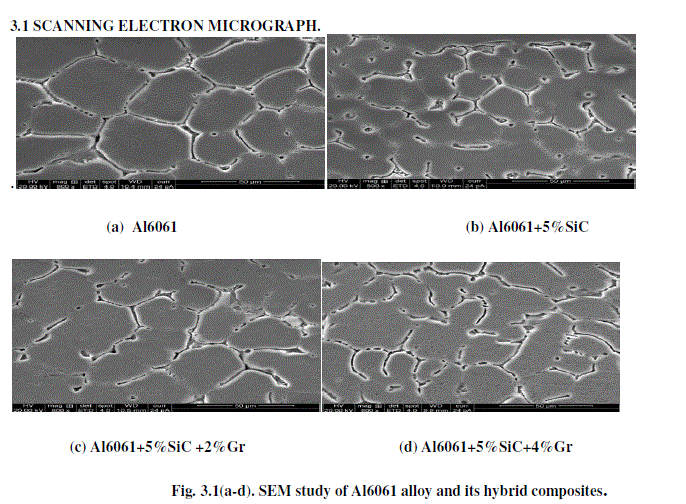 |
| A clear uniform distribution of reinforcing particulates within the matrix phase can be seen in the fig. It reveals an excellent bond between matrix Al6061 and reinforcement phase. |
3.2 HARDNESS TEST |
| Fig 3.2 shows results of micro hardness tests conducted on the base matrix alloy Al601 and Al6061-SiC-Gr composites containing varying %wt of graphite particles without heat treatment. |
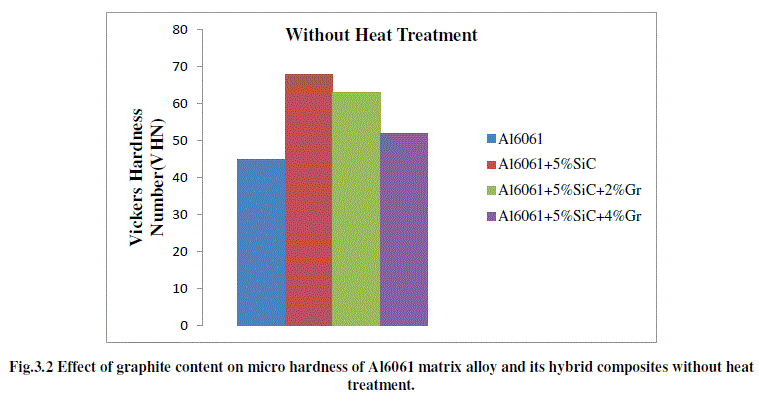 |
| From the graph it is observed that with addition of SiC in matrix alloy increases hardness, there is an increase in hardness about 51%. SiC is hard reinforcement embedded in soft and ductile matrix alloy, this hard reinforcement enhances the micro hardness and also could be due to better wet ability of SiC by al6061 matrix which leads to good bonding between the matrix and reinforcement. |
| Increase in percentage of graphite reduceshardness of the composite. Addition of 2% graphite decreases the hardness by 11% when compared with Al6061-SiC composite. The decrease in hardness can be attributed by following factor. Graphite particulates mainly due to soft behavior of graphite which decreases the hardness of the hybrid composite.Also due to poor wetting characteristics of Graphite by Al6061. |
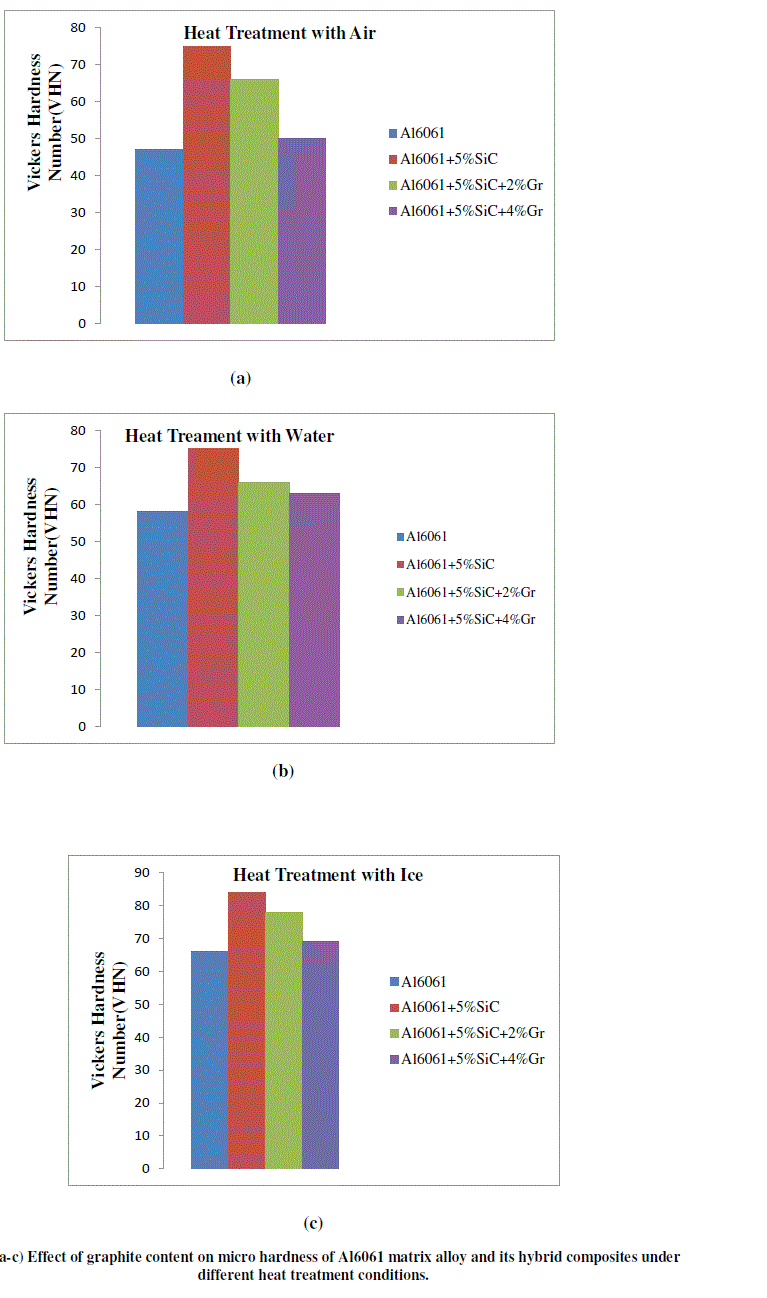 |
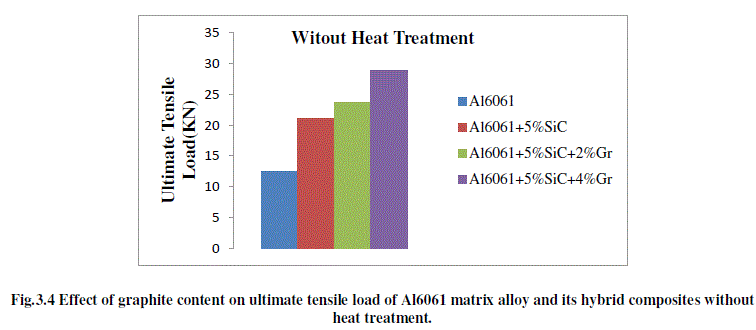 |
| It is observed from the graph that the heat treatment has profound effect on the micro hardness of Al6061 matrix alloy as well as its composites |
| Improved hardness of the matrix alloy Al6061 and Al6061-SiC-Gr composites on heat treatment can be attributed to the formation of intermetallic precipitates namely Mg2Si during ageing process of the heat treatment. Introduction of SiC reinforcement promotes zone kinetics and phase formation reaction during heat treatment process. The reinforcement depending on percentage in matrix material accelerates the precipitation, thereby increasing the hardness. Increase in %Gr in Al6061-SiC-Gr composites decreases the hardness, the decrease in hardness is due to increased porosity with increase of graphite particulate. |
| 3.3 TENSILE TEST |
| The Graph of Tensile test of composites Al6061, Al6061-SiC and Al6061-SiC-Gr hybrid composites are as shown below. |
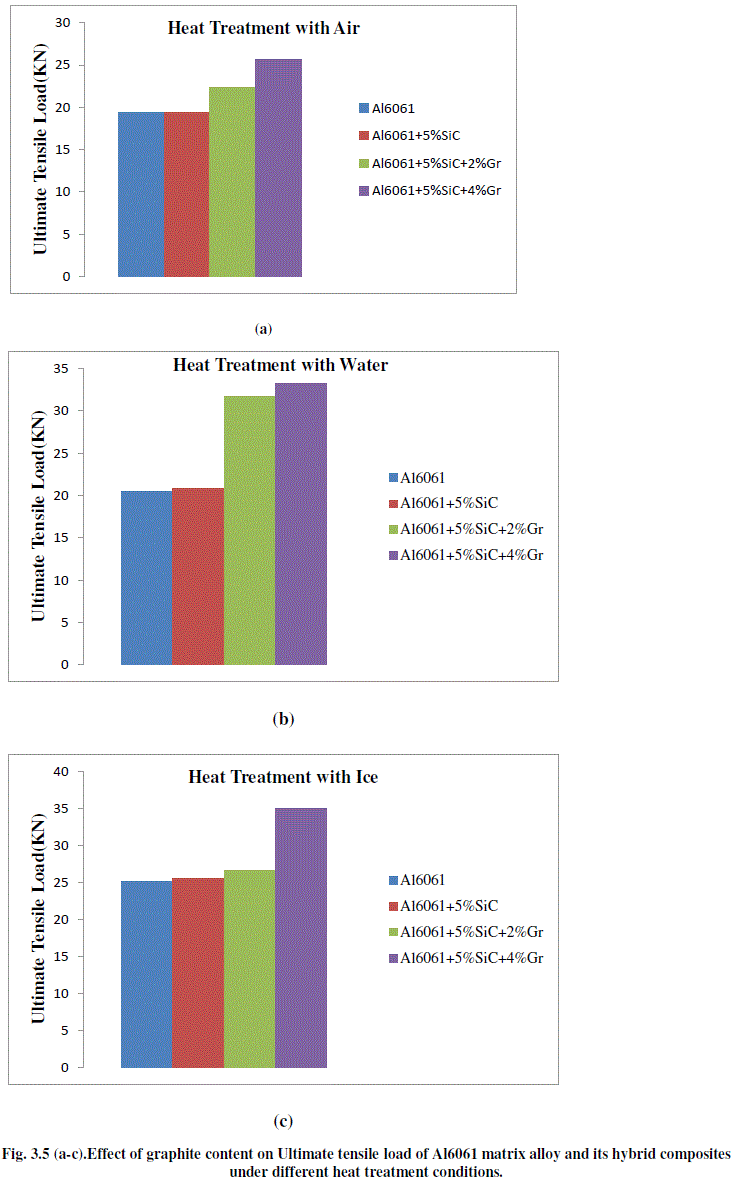 |
| From the fig. 3.4 it can be seen that the tensile strength of the composites is higher than the matrix alloy Al6061.Also from the figure it can be observed that the tensile strength of the Al6061-Graphite composites is higher than that of composite of Al6061-SiC. This improvement in tensile strength of composites may be attributed by the following facts. |
| The fuller graphite possesses higher strength when compared to SiC.Increase in strength is possibly due to the thermal mismatch between metallic matrix and the reinforcement which is a major mechanism for increasing the dislocation density of the matrix and therefore, increasing the composite strength. Graph of tensile test of composite Al6061 and hybrid composites for heat treatment with different quenching medium are as shown below. |
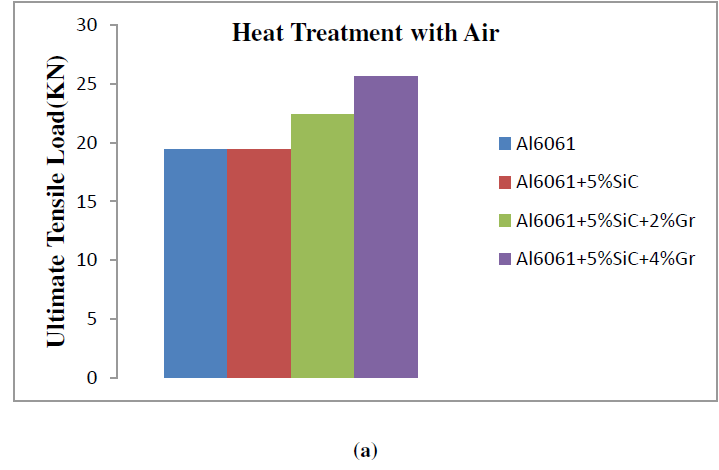 |
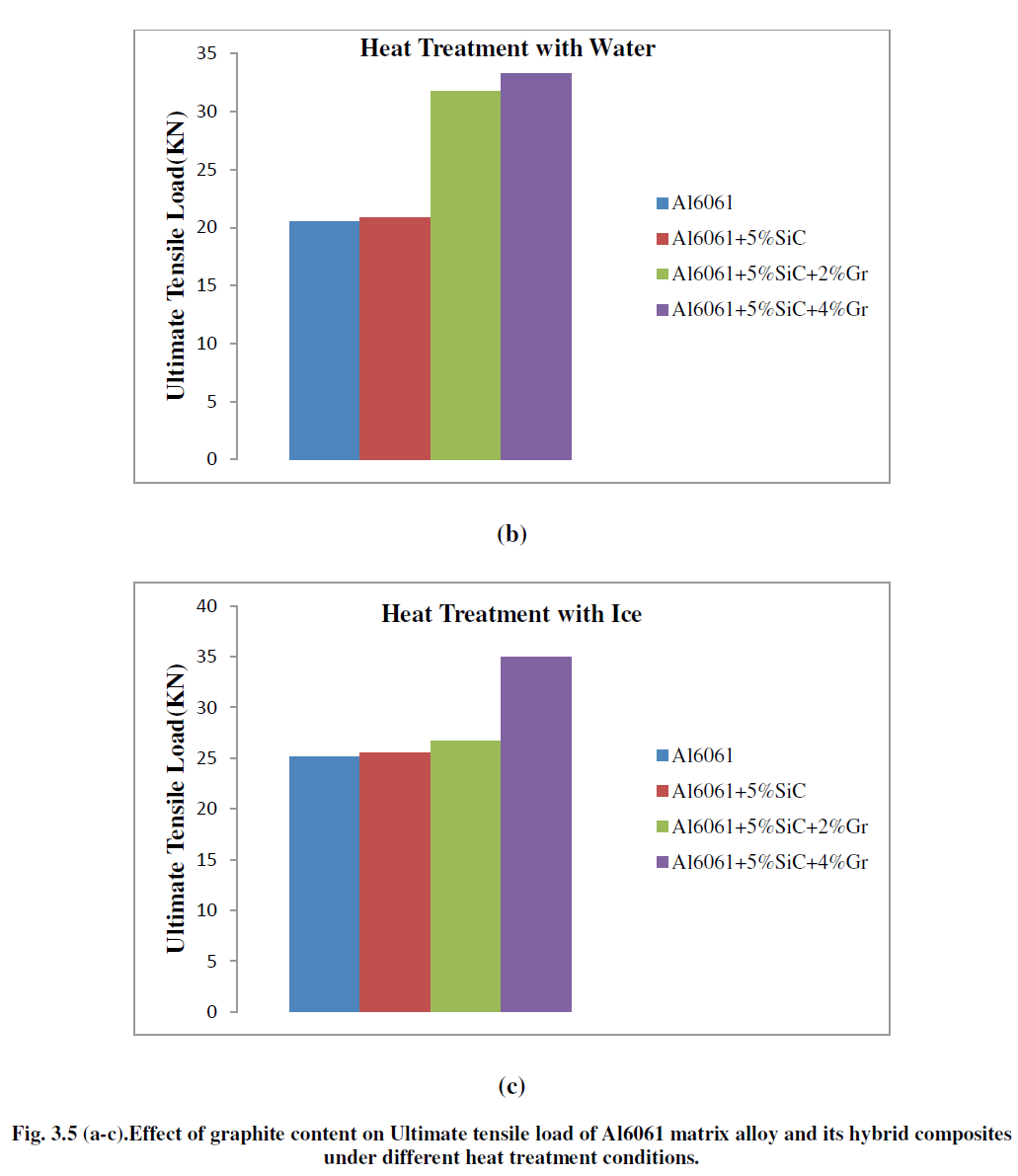 |
| Heat treatment has profound effect on the increase in the tensile strength of composite compared to the base matrix alloy Al6061.The increase in tensile strength can be attributed by the fact that nucleation of precipitation phases during heat treatment, which may lead to increase in plastic deformation through crack deflection mechanism which acts competitively to the precipitation leading to increase in toughness. |
IV. CONCLUSION |
| Al6061and Al6061-SiC-Gr composites were successfully produced by vortex method. Scanned electron micrographs studies reveals that both SiC and Gr reinforcement are uniformly distributed.Microhardness of Al6061 hybrid composites is higher when compared with the matrix alloy. Increased hardness is due to increase in hard reinforcement in soft matrix.Heat treatment has significant effect on the microhardness when compared with results without heat treatment. Addition ofSiC increases the tensile strength andwhere as increasing amount Graphite decreases hardness. The decrease in hardness is due to as the Gr increases the porosities increase which results decrease in hardness.Heat treatment has significant effect on all the above properties studied. Heat treatmentuniforms the grain structure thereby reduces the porosities ad increases the hardness. |
References |
|